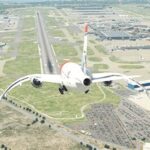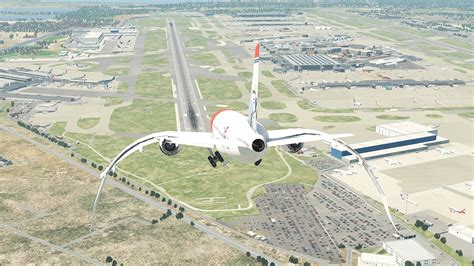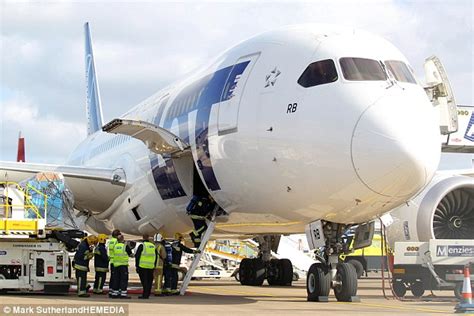
The final moments aboard Air India Express Flight 812, which crashed in Mangalore in 2010, killing 158 people, are brought into sharp focus by the cockpit voice recorder transcript, revealing the pilots’ confusion and delayed reaction as the aircraft overran the runway. The transcript, recently examined by aviation experts, highlights a “longitudinal instability” issue and a “delayed go-around,” painting a disturbing picture of the crew’s struggle to maintain control in the crucial seconds before impact.
The Air India Express Flight 812 crash, one of India’s deadliest aviation disasters, continues to be a subject of intense scrutiny more than a decade after the tragic event. The recently resurfaced details from the cockpit voice recorder (CVR) transcript offer a chilling, moment-by-moment account of the flight crew’s actions and communications leading up to the devastating crash. Aviation experts who reviewed the transcript have pinpointed critical factors, including a compromised landing approach, unstable flight conditions, and a fatal delay in executing a “go-around” procedure, as primary contributors to the disaster. The revelations from the CVR transcript underscore the complex interplay of human factors, technical issues, and environmental conditions that can contribute to aviation accidents.
The accident occurred on May 22, 2010, when the Boeing 737-800 operating as Air India Express Flight 812 from Dubai to Mangalore, India, overshot the runway while landing at Mangalore International Airport. The crash resulted in the loss of 158 lives, with only eight survivors. The CVR transcript, a crucial piece of evidence in the accident investigation, provides a detailed record of the conversations and sounds within the cockpit during the flight’s final moments.
Aviation experts analyzing the CVR transcript noted that the pilots seemed to have misjudged the aircraft’s descent rate and landing distance. The aircraft approached the runway at a higher-than-normal speed, which, compounded by the limited runway length at Mangalore International Airport, made a safe landing increasingly challenging.
One of the critical observations from the CVR transcript is the presence of what experts describe as “longitudinal instability.” This refers to the aircraft’s tendency to oscillate or deviate from its intended flight path along its longitudinal axis, making it difficult for the pilots to maintain a stable approach. The transcript reportedly captures instances where the pilots struggled to correct these deviations, indicating a potential loss of control in the critical moments before landing.
The CVR transcript also suggests a significant delay in the pilots’ decision to execute a “go-around.” A go-around is a standard safety procedure in which the pilots abort the landing and initiate a climb to circle around for another landing attempt. This maneuver is typically performed when the aircraft is not properly aligned with the runway, is approaching at an excessive speed, or when other unsafe conditions are detected.
According to the experts who reviewed the transcript, the pilots of Flight 812 appeared to have delayed their decision to initiate a go-around, possibly due to a combination of factors, including overconfidence, a desire to complete the landing, or a misjudgment of the remaining runway length. This delay proved fatal, as it left the pilots with insufficient time and distance to abort the landing and prevent the aircraft from overrunning the runway.
The Air India Express Flight 812 crash investigation revealed a confluence of factors that contributed to the tragedy. The accident report cited pilot error as a primary cause, specifically highlighting the captain’s failure to adhere to standard operating procedures and his decision to continue the landing despite an unstable approach. However, the report also acknowledged the role of other factors, such as the challenging terrain surrounding Mangalore International Airport and the limited runway length.
The Mangalore airport runway, known as a “tabletop runway,” presents unique challenges to pilots due to its location on a raised plateau with steep drops on either side. The limited margin for error on tabletop runways requires precise piloting skills and strict adherence to safety protocols.
The Air India Express Flight 812 crash prompted significant changes in aviation safety regulations and training procedures in India. The Directorate General of Civil Aviation (DGCA), India’s aviation regulatory authority, implemented stricter guidelines for pilot training, emphasizing the importance of go-around procedures and the management of unstable approaches. The DGCA also mandated enhanced monitoring of pilot performance and increased scrutiny of airline safety practices.
In the aftermath of the crash, significant investments were made to improve the safety infrastructure at Mangalore International Airport. These included extending the runway safety area (RESA) beyond the runway threshold to provide a greater margin of safety in the event of an overrun. Additional safety measures, such as improved runway lighting and enhanced navigational aids, were also implemented to enhance the airport’s overall safety profile.
The Air India Express Flight 812 crash remains a stark reminder of the inherent risks associated with aviation and the critical importance of maintaining the highest standards of safety. The lessons learned from this tragedy have led to significant improvements in aviation safety regulations, pilot training, and airport infrastructure, aimed at preventing similar accidents in the future.
The disaster also highlighted the importance of cockpit resource management (CRM), a training program designed to improve communication and decision-making among flight crew members. CRM training emphasizes the need for pilots to work together effectively, share information openly, and challenge each other’s decisions when necessary. The CVR transcript from Flight 812 suggests that a lack of effective CRM may have contributed to the pilots’ failure to recognize and address the unstable approach in a timely manner.
The Air India Express Flight 812 crash also raised questions about the psychological factors that can influence pilot performance. The investigation revealed that the captain had been under stress due to personal and professional issues, which may have impaired his judgment and decision-making abilities. This underscored the importance of addressing pilot fatigue and stress, and of providing pilots with adequate support and resources to manage these challenges.
In addition to the human factors, the Air India Express Flight 812 crash also highlighted the importance of aircraft maintenance and inspection. The investigation revealed that the aircraft had experienced previous maintenance issues, including problems with its landing gear and braking system. This underscored the need for rigorous maintenance procedures and thorough inspections to ensure that aircraft are in safe operating condition.
The Air India Express Flight 812 crash had a profound impact on the aviation industry in India. The accident led to increased scrutiny of airline safety practices, stricter enforcement of aviation regulations, and a renewed focus on improving pilot training and cockpit resource management. The crash also prompted significant investments in airport infrastructure, aimed at enhancing safety and preventing future accidents.
The lessons learned from the Air India Express Flight 812 crash have been incorporated into aviation safety programs around the world. The accident has served as a reminder of the importance of adhering to standard operating procedures, maintaining situational awareness, and making timely decisions in the face of challenging situations.
The Air India Express Flight 812 crash also raised questions about the role of automation in aviation safety. Modern aircraft are equipped with sophisticated automation systems that can assist pilots in controlling the aircraft and managing its systems. However, the investigation revealed that the pilots of Flight 812 may have become overly reliant on automation, leading to a loss of situational awareness and a delayed response to the unstable approach. This underscored the importance of training pilots to effectively manage automation systems and to be prepared to take manual control of the aircraft when necessary.
The Air India Express Flight 812 crash remains a tragic reminder of the risks associated with aviation and the importance of maintaining the highest standards of safety. The lessons learned from this tragedy have led to significant improvements in aviation safety regulations, pilot training, and airport infrastructure, aimed at preventing similar accidents in the future.
The aftermath of the crash saw intense grief and anger among the families of the victims. Compensation claims were filed, and the legal battles stretched on for years. The accident also sparked a debate about the adequacy of compensation provided to the families of air crash victims in India, with many arguing that the amounts were insufficient to address the long-term financial and emotional needs of the bereaved families. This led to calls for a more standardized and equitable system of compensation for air crash victims in India.
The Air India Express Flight 812 crash also highlighted the importance of effective emergency response planning. The initial response to the crash was hampered by the remote location of the airport and the challenging terrain surrounding the crash site. This underscored the need for well-coordinated emergency response plans, adequate resources, and trained personnel to effectively manage the aftermath of an aviation accident.
The Air India Express Flight 812 crash also served as a reminder of the importance of transparency and accountability in aviation accident investigations. The investigation process was subject to public scrutiny, and there were calls for the investigation report to be made publicly available. This underscored the need for independent and transparent investigations to ensure that the causes of aviation accidents are fully understood and that appropriate measures are taken to prevent future accidents.
The Air India Express Flight 812 crash remains a sensitive topic for the aviation industry in India. The accident has had a lasting impact on the families of the victims, the aviation community, and the public at large. The lessons learned from this tragedy continue to shape aviation safety practices and regulations in India and around the world.
The accident also raised questions about the oversight of low-cost airlines in India. Air India Express, a subsidiary of Air India, was a budget carrier that operated primarily on routes to the Middle East. The crash led to increased scrutiny of the safety practices of low-cost airlines, with calls for stricter oversight and enforcement of aviation regulations to ensure that these airlines maintain the same high standards of safety as full-service carriers.
The Air India Express Flight 812 crash also highlighted the importance of continuous improvement in aviation safety. The aviation industry is constantly evolving, with new technologies, procedures, and challenges emerging on a regular basis. It is essential that aviation safety practices and regulations are continuously reviewed and updated to reflect these changes and to ensure that the highest standards of safety are maintained.
The Air India Express Flight 812 crash serves as a reminder that aviation safety is a shared responsibility. Airlines, regulators, pilots, air traffic controllers, and airport operators all have a role to play in ensuring that air travel is as safe as possible. By working together and learning from past mistakes, the aviation industry can continue to improve its safety record and prevent future tragedies.
Frequently Asked Questions (FAQ):
-
What were the primary factors that contributed to the Air India Express Flight 812 crash?
- The primary factors included pilot error, specifically the captain’s failure to adhere to standard operating procedures and his decision to continue the landing despite an unstable approach. Additional factors included “longitudinal instability,” delayed go-around, the challenging terrain of Mangalore International Airport (a tabletop runway), and potential issues with cockpit resource management.
-
What is a “go-around” and why was its delay significant in this accident?
- A “go-around” is a standard safety procedure where pilots abort a landing attempt and initiate a climb to circle around for another try. The delay in executing a go-around in Flight 812 was significant because it left the pilots with insufficient time and distance to prevent the aircraft from overrunning the runway, according to expert analysis of the CVR transcript.
-
What changes were implemented in aviation safety regulations and airport infrastructure following the crash?
- Following the crash, the Directorate General of Civil Aviation (DGCA) implemented stricter guidelines for pilot training, emphasizing go-around procedures and unstable approach management. Enhanced monitoring of pilot performance and scrutiny of airline safety practices were also mandated. At Mangalore International Airport, the runway safety area (RESA) was extended, and improvements were made to runway lighting and navigational aids.
-
What is “longitudinal instability” and how did it affect Flight 812?
- “Longitudinal instability” refers to the aircraft’s tendency to oscillate or deviate from its intended flight path along its longitudinal axis, making it difficult for pilots to maintain a stable approach. Experts analyzing the CVR transcript noted that the pilots struggled to correct these deviations, indicating a potential loss of control in the critical moments before landing.
-
How did the crash investigation address human factors such as pilot stress and cockpit resource management (CRM)?
- The investigation revealed that the captain had been under stress, potentially impairing his judgment. The accident also underscored the importance of CRM, a training program designed to improve communication and decision-making among flight crew members. The CVR transcript suggested that a lack of effective CRM may have contributed to the pilots’ failure to recognize and address the unstable approach in a timely manner.
-
What is a “tabletop runway,” and what challenges does it present to pilots?
A tabletop runway is a runway located on a plateau or a raised area with steep drops on one or both sides. This design presents unique challenges to pilots, primarily due to the limited margin for error during landing and takeoff. The steep drop-offs can create a “visual illusion” that affects a pilot’s perception of height and distance, making it difficult to judge the correct approach angle and touchdown point. The limited space also means that there is a reduced safety area in case of an overrun or undershoot.
- What role did the aircraft’s maintenance history play in the investigation?
The investigation revealed that the aircraft had experienced previous maintenance issues, including problems with its landing gear and braking system. This underscored the need for rigorous maintenance procedures and thorough inspections to ensure that aircraft are in safe operating condition. While not a direct cause of the crash, it highlighted systemic issues within the airline’s maintenance protocols that needed to be addressed.
- How did the accident impact compensation for air crash victims in India?
The accident sparked a debate about the adequacy of compensation provided to the families of air crash victims in India. Many argued that the amounts were insufficient to address the long-term financial and emotional needs of the bereaved families, leading to calls for a more standardized and equitable system of compensation for air crash victims in India.
- What were the challenges faced during the initial emergency response?
The initial response to the crash was hampered by the remote location of the airport and the challenging terrain surrounding the crash site. This underscored the need for well-coordinated emergency response plans, adequate resources, and trained personnel to effectively manage the aftermath of an aviation accident.
- What lessons were learned about automation and pilot training as a result of the accident?
The investigation revealed that the pilots of Flight 812 may have become overly reliant on automation, leading to a loss of situational awareness and a delayed response to the unstable approach. This underscored the importance of training pilots to effectively manage automation systems and to be prepared to take manual control of the aircraft when necessary.
- How does cockpit resource management (CRM) contribute to aviation safety, and what are its key principles?
Cockpit Resource Management (CRM) is a training program designed to improve communication and decision-making among flight crew members. It aims to create a more collaborative and effective team environment in the cockpit, where all members feel empowered to speak up and contribute to the safe operation of the aircraft.
The key principles of CRM include:
- Situational Awareness: Maintaining a clear and accurate understanding of the current state of the aircraft, the environment, and the flight plan.
- Communication: Open, clear, and concise communication between all crew members, including sharing information, asking questions, and providing feedback.
- Workload Management: Effectively distributing tasks and responsibilities among crew members to avoid overload and ensure that all necessary actions are completed in a timely manner.
- Decision-Making: Using a structured and collaborative approach to decision-making, considering all available information and input from crew members.
- Leadership and Assertiveness: Effective leadership by the captain, while also encouraging assertiveness from other crew members to challenge decisions or raise concerns when necessary.
- Crew Coordination: Working together as a team to achieve common goals, supporting each other, and coordinating actions to ensure a smooth and safe flight.
- Use of Resources: Effectively utilizing all available resources, including checklists, manuals, and automation systems.
- Can you describe the timeline of events leading to the crash, based on the CVR transcript analysis?
While the exact, detailed timeline requires access to the full CVR transcript and expert analysis, a general sequence of events can be reconstructed based on available information:
- Approach: The aircraft approached Mangalore International Airport at a higher-than-normal speed and descent rate.
- Instability: The pilots encountered “longitudinal instability,” struggling to maintain a stable approach.
- Delayed Go-Around: The pilots delayed initiating a go-around procedure despite the unstable approach and excessive speed.
- Overrun: The aircraft overran the runway due to the delayed go-around and insufficient distance to stop.
- Crash: The aircraft crashed beyond the runway, resulting in the loss of 158 lives.
- What were the recommendations from the official investigation report to prevent similar accidents?
The official investigation report likely contained numerous recommendations, but some common areas of focus in aviation accident investigations include:
- Enhanced Pilot Training: Improving pilot training programs to emphasize go-around procedures, unstable approach management, and cockpit resource management.
- Stricter Enforcement of Regulations: Ensuring that airlines adhere to all applicable safety regulations and that regulators conduct thorough oversight and inspections.
- Improved Airport Infrastructure: Enhancing airport infrastructure, such as extending runway safety areas, improving runway lighting, and installing advanced navigational aids.
- Enhanced Crew Resource Management: Implementing and reinforcing CRM training programs to improve communication, decision-making, and teamwork in the cockpit.
- Addressing Pilot Fatigue and Stress: Providing pilots with adequate support and resources to manage fatigue and stress, and implementing policies to prevent pilots from flying when they are not fit to do so.
- Reviewing and Updating Procedures: Continuously reviewing and updating standard operating procedures to reflect best practices and to address emerging safety risks.
- Improving Aircraft Maintenance: Ensuring that aircraft are properly maintained and inspected and that maintenance issues are addressed promptly and effectively.
- How did the psychological state of the pilot influence the accident?
The investigation revealed that the captain had been under stress due to personal and professional issues, which may have impaired his judgment and decision-making abilities. This highlighted the importance of addressing pilot fatigue and stress, and of providing pilots with adequate support and resources to manage these challenges. While stress is not always a direct cause of accidents, it can contribute to errors in judgment and decision-making, especially in high-pressure situations.
- In what ways can technology help prevent future accidents of this nature?
Technology can play a significant role in preventing future accidents of this nature:
- Enhanced Ground Proximity Warning Systems (EGPWS): Improved EGPWS can provide earlier and more accurate warnings of potential terrain conflicts, giving pilots more time to react and avoid crashes.
- Runway Overrun Protection Systems (ROPS): ROPS can provide pilots with real-time information about the remaining runway length and the aircraft’s deceleration rate, helping them to make better decisions about whether to continue or abort the landing.
- Head-Up Displays (HUDs): HUDs can project critical flight information onto the windshield, allowing pilots to maintain situational awareness and make more accurate judgments during landing.
- Advanced Autoland Systems: More sophisticated autoland systems can automatically land the aircraft in low-visibility conditions or when the pilots are incapacitated.
- Data Analysis and Predictive Modeling: Analyzing flight data can help to identify patterns and trends that may indicate potential safety risks, allowing airlines and regulators to take proactive measures to prevent accidents.
- Improved Flight Simulators: More realistic and immersive flight simulators can provide pilots with better training and prepare them for a wider range of emergency situations.
- What safety nets are in place today to prevent similar accidents?
Since the Air India Express Flight 812 crash, several layers of safety nets have been strengthened or newly implemented in the aviation industry to prevent similar accidents:
-
Enhanced Pilot Training: Modern pilot training programs emphasize not just stick-and-rudder skills but also comprehensive scenario-based training. This training includes handling unstable approaches, go-around procedures in various conditions, and effectively managing automation. CRM training has also become more rigorous, focusing on better communication and decision-making under pressure.
-
Improved Air Traffic Control (ATC) Procedures: ATC plays a crucial role in monitoring aircraft approaches and landings. Enhanced ATC procedures ensure controllers provide timely alerts to pilots about deviations from a stable approach path. ATC also uses advanced surveillance technologies to monitor aircraft position and speed.
-
Runway End Safety Areas (RESAs): Following the Mangalore accident and similar incidents, there has been increased emphasis on RESAs. RESAs are designed to provide a buffer zone at the end of the runway, allowing aircraft to safely decelerate in case of an overrun.
-
Engineered Materials Arresting Systems (EMAS): EMAS are installed at the end of runways to quickly decelerate an aircraft in the event of an overrun. These systems are made of crushable materials that absorb the aircraft’s energy, bringing it to a stop more effectively than conventional pavement.
-
Advanced Monitoring Systems: Airlines now use advanced flight data monitoring systems that track hundreds of parameters during each flight. This data is analyzed to identify potential safety issues and areas for improvement in pilot training and operational procedures.
-
Go-Around Policies: Airlines have implemented stricter go-around policies that emphasize pilots should not hesitate to execute a go-around if the approach is unstable or conditions are not ideal.
-
Regular Audits and Inspections: Aviation authorities conduct regular audits and inspections of airlines and airports to ensure they comply with safety regulations and maintain high standards of operation.
-
Automation and Technology: Improved cockpit technology such as enhanced ground proximity warning systems (EGPWS) and head-up displays (HUDs) aid pilots in making critical decisions during landing and takeoff.
-
Runway Safety Teams (RSTs): Many airports have established runway safety teams composed of pilots, controllers, airport operators, and other stakeholders. These teams analyze runway safety incidents and develop strategies to prevent future accidents.
These multifaceted approaches have significantly enhanced aviation safety since 2010, minimizing the likelihood of similar accidents. However, continuous improvement and vigilance remain crucial in maintaining these high safety standards.









